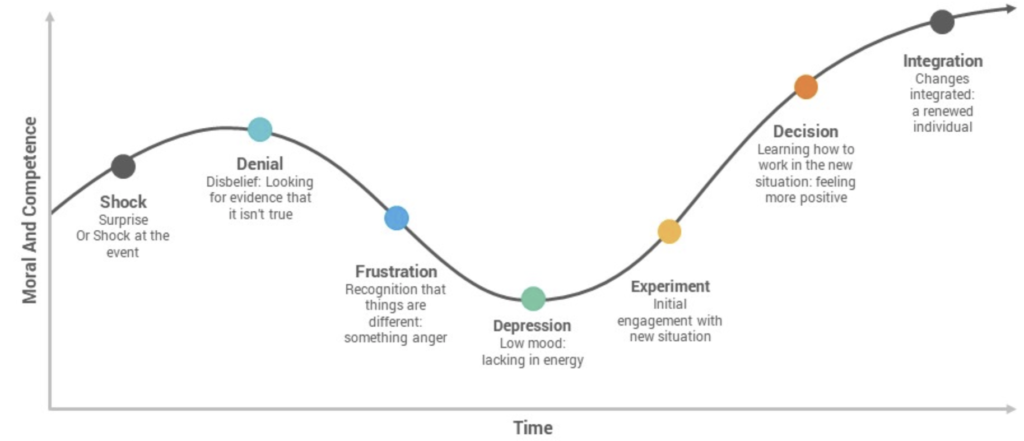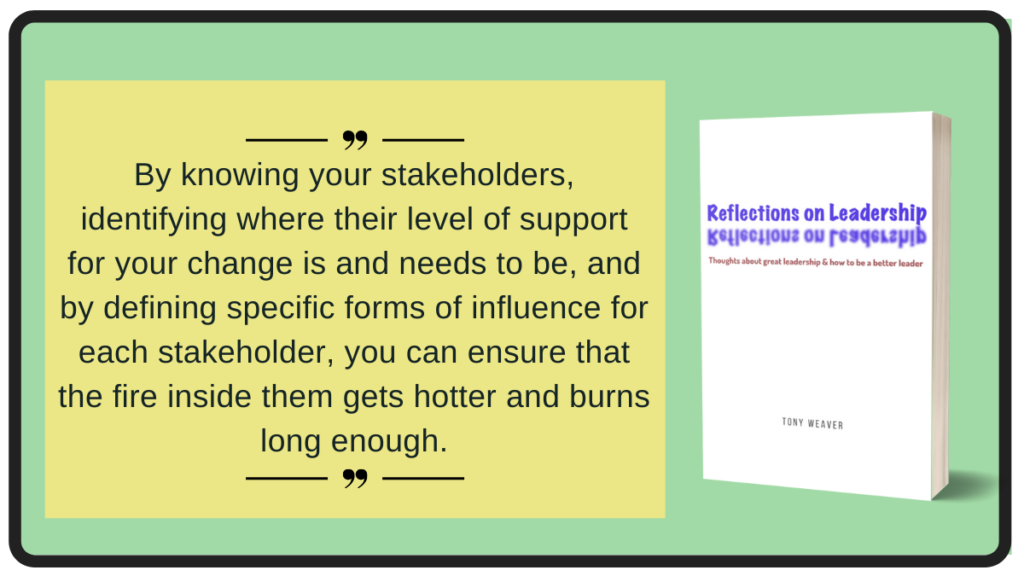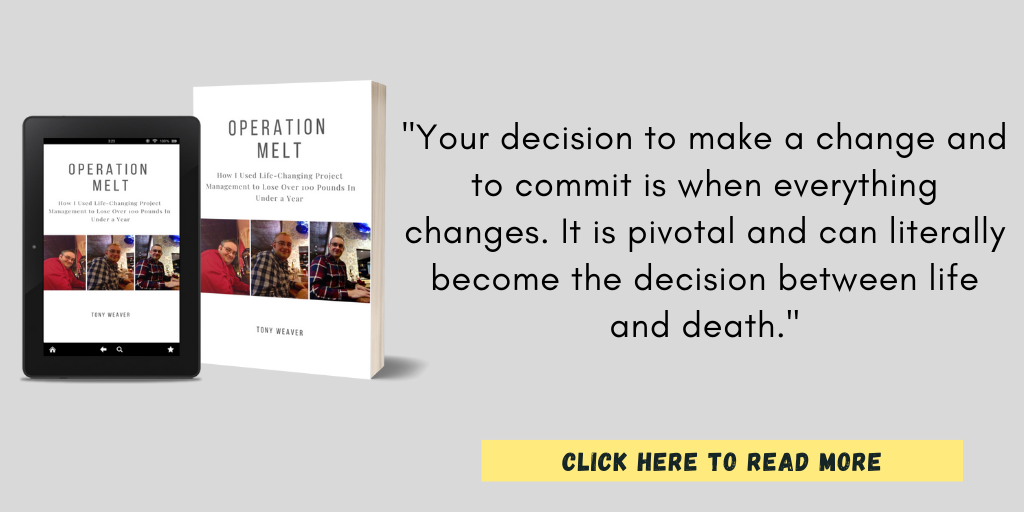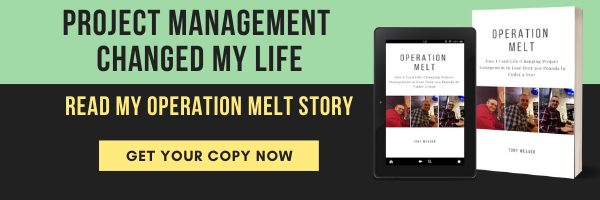I am a believer in the power of project management.
As a professional project manager for twenty years, I have witnessed project success drive business results. I have also proven that project management can change lives and help achieve personal transformation. Now I am sharing some practical tips and techniques that you can use to help achieve your own personal goals, live your best life and become a PM Believer.
Want Project Success? Beware Of The Dangerous Curve!
Every project creates a change. The best PMs know that managing that change can make the difference between a successful and failed project. But, before you can help people through a change, you need to know where they are in the change cycle.
The change cycle is a journey that all people follow when adopting changes, especially in business settings. This cycle is commonly represented with a visual called the Kubler-Ross Change Curve. It depicts how the average person moves from shock to integration, following a series of ups and downs over time when a change happens.
By understanding where stakeholders are in the change cycle, a project manager can choose the appropriate influence strategy to help them to the next level.
Our personal goal projects are also intended to bring about change in our lives. Whether you are losing weight, saving money, changing jobs or pursuing some other goal, your intent is the same. To end your project in a different position than when you started.
Like the project change, we also follow a change cycle. Knowing where you are in your cycle helps you identify what actions are needed to help you successfully navigate your change.
Our personal change cycle is represented by the following Stages of Change visual (e.g., I didn’t create this graphic, I am just borrowing one version).
In our change cycle, we start at pre-contemplation, where we don’t know a change will happen. We are just living our lives.
Then, in Contemplation, we realize we have a problem, and we might want to change something. But, we are still on the fence and haven’t committed to taking action.
Once we have decided to do something, we move into the Preparation stage. We start researching and maybe even taking some small steps towards our change.
Then, we build a plan, and we start moving in the Action stage. This is where the change moves from “I wish…” to “I am…” – or we hope it does.
Then we enter the danger zone for our change. This is where we make a choice, and changes often fail. After the initial energy of the Action stage, we have to sustain the change in the Maintenance phase. This means continuing to do the work needed to live our new life, including the change; this requires work.
Unfortunately, life and our old habits sometimes get the better of us, and we enter the Relapse stage. This is where we slip backward and stop doing the work to maintain the change. In this stage, we need to act quickly to get ourselves back on track and into the maintenance phase. If we don’t intervene during a relapse, our goal will likely fail.
Finally, after practicing the new behaviors for long enough, they become our new “normal.” We are no longer tempted to slip back to our old habits. The change has happened, and the cycle terminates… until the next time.
If you are trying to improve some area of your life, you will move through the change cycle. If you anticipate this, pay attention to where you are in the cycle and take steps to support yourself, you can succeed. But, failing to plan ahead and this hoping for the best can be a recipe for disaster. Your goal is as good as dead!
Do you need a partner to help you master your change cycle? That’s what I do.
Click Here to learn more about my Operation Melt coaching services.
Breathe new life into your goals
Download my free ebook to learn how to create goals that actually work and get the jump-start you need in life!








